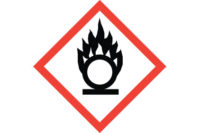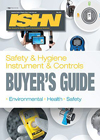Well, now it is time to pull the trigger and complete the training. Here are some ideas to help you get the job done.
In-house deadline
A realistic in-house deadline of mid-November is needed to meet revised HazCom training. OSHA’s deadline falls on a Sunday. It’s unlikely that you will be able to back up weekday training to Friday November 29 because the Thanksgiving holiday falls on Thursday, November 28. Expect some employees to bundle the whole week of November 25 into vacation.
Length of training
OSHA doesn’t specify the length for HazCom training. Some employers may simply provide federal OSHA’s 2012 HazCom SDS/label “Briefs,” “QuickCards,” “Factsheets,” and even “WalletCards” (https://www.osha.gov/dsg/hazcom/index.html) to employees, give a few comments and pull off the training in a five to ten-minute floor meeting.
To fully achieve the objective for an employee’s “right to understand” about the hazards and precautions of chemicals may take many hours. Generally, your employer will allot about an hour of classroom time, with as many employees as they can get into a room, for HazCom training.
PowerPoint
“The Hazard Communication Training Program (including GHS revisions)” revised May 3, 2013, prepared by the Consultation Education & Training Division, Michigan Occupational Safety & Health Administration, is an excellent tool. (There is no OSHA PowerPoint.)
The MIOSHA HazCom PowerPoint can be downloaded and edited to make it look like your own creation, but the information should be shown in its entirety. With the exceptions of the introduction and final slides, only slides 43 and 44 are specific to Michigan employers. The PowerPoint includes notes pages that discuss the content of each slide.
The downside to the MIOSHA PowerPoint is that you will be hard pressed to read aloud all the slide notes, answer a few Q&A from students and complete the material in one hour.
If you are limited to one hour, rehearse the MIOSHA slide notes and limit discussion in SDS sections 9-16. Data in sections 9-11 may be too technical for most employees and sections 12-15 contain environmental data that is non-mandatory under OSHA.
Key SDS training sections
Expect most questions from employees during HazCom training to come from SDS sections:
• Section 2: Hazard(s) Identification;
• Section 7: Handling and Storage; and,
• Section 8: Exposure Controls/Personal Protection
To facilitate an employee’s understanding of “Precautionary Statements” found in SDS section 2, make a few copies of Appendix C to the HazCom standard, or distribute separate pages of the appendix, to pass around in the class for review and quick discussion.
Don’t get bogged down with student Q&A in SDS section 7. Emphasize how release of a chemical should be minimized and state company policy on personal hygiene — prohibit eating, drinking and smoking in designated work areas.
Data in SDS section 8 is probably the most important for employees to understand during their normal work activities. Section 8 covers exposure limits, engineering controls and PPE. Check with management to determine how deeply exposure limits should be explained. Remember, a manufacturer-developed DNEL is expected to start showing up on new GHS SDSs.
Address the DNEL?
The following Wikipedia entry helps you determine how the topic should addressed if it comes up in Q&A during HazCom training.
“The derived no-effect level (DNEL) is the level of exposure to a substance above which humans should not be exposed. According to REACH (Registration, Evaluation, Authorisation and Restriction of Chemicals) legislation, i.e. REGULATION (EC) No 1907/2006 OF THE EUROPEAN PARLIAMENT AND OF THE COUNCIL of 18 December 2006, Annex 1, manufacturers and importers of chemical substances are required to calculate DNELs as part of their Chemical Safety Assessment (CSA) for any chemicals used in quantities of 10 tonnes or more per year. The DNEL is to be published in the manufacturer’s Chemical Safety Report (CSR) and, for hazard communication, in an extended Safety Data Sheet.”
Engineering controls
Employees should be informed during HazCom training that engineering controls are expected to be more specific on new SDSs. Explain that although a new SDS may say “use local exhaust ventilation when …” or “use only in a spray booth or enclosure,” specific conditions of use for the chemical at the worksite will determine what engineering controls are necessary.
PPE
Inform employees that new SDSs will include more specific information on PPE — provide the specific type of material for protection, thickness of material, breakthrough time, etc. If Q&A starts to get too deep during HazCom training, remind employees that PPE training, such as respiratory protection, will be a separate topic for safety training as required by OSHA.
Additional training
Within HazCom, employees should be aware of the minimal required content in each section of an SDS. Where topics within an SDS section such PPE, as noted above, or Section 4: First-Aid Measures, Section 5: Fire-Fighting Measures and Section 6: Accidental Release Measures contain topics subject to training under other OSHA standards, e.g. Bloodborne Pathogens or Hazardous Waste Operations and Emergency Response, then training within HazCom may only need a brief mention.
Bottom line
Don’t overdo HazCom training. Remember, the December 1, 2013, deadline for HazCom training is not a conclusion — it’s a beginning for employees to better understand about chemical hazards.





